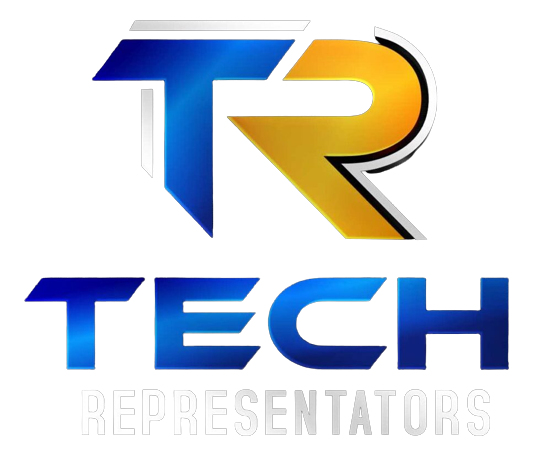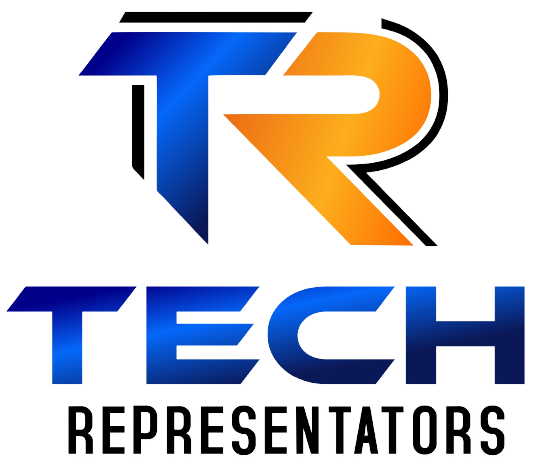In today’s fast-paced world, technology is deeply ingrained in both our personal and professional lives. Whether you’re a business seeking to streamline operations or an individual looking to enhance your digital experience, understanding how to choose and implement the right technology system is crucial.
This comprehensive guide will walk you through the essential steps and key considerations for acquiring a technology system that meets your needs in today’s modern era. We’ll delve into the vital factors to consider, from assessing your requirements to evaluating solutions and ensuring a seamless implementation.
Clarifying Your Needs
Defining your needs is the crucial first step in acquiring a technology system. This involves pinpointing the specific pain points you want to solve and the objectives you aim to accomplish. To clarify your requirements, consider the following essential questions:
– What are the core functions you need from the system?
– Who will be using the system, and what are their technical skill levels?
– What is your allocated budget for acquiring and maintaining the system?
By answering these questions, you can develop a comprehensive requirements list that will serve as a guiding framework for your decision-making process, ensuring you find the right technology system to meet your needs.
Exploring Your Options
With a clear understanding of your needs, the next step is to explore the available options in the technology market. Staying informed about the latest developments is crucial, as the market is constantly evolving. During your research, consider the following key factors:
– System Capabilities: Ensure the system meets your requirements with the necessary features and functionalities.
– Scalability: Select a system that can adapt to your growing needs, whether it’s adding users, increasing storage, or integrating with other technologies.
– Compatibility: Confirm the system’s compatibility with your existing infrastructure and software applications.
– Vendor Reputation: Research potential vendors’ reputations by examining customer reviews, case studies, and industry awards to gauge their reliability and customer satisfaction.
– Cost and ROI
– Security and data protection
– User experience and interface
– Support and training options
– Future development and roadmap
By carefully evaluating these factors, you can make an informed decision and find the best technology system to meet your needs.
Understanding and Evaluating Costs
When acquiring a technology system, cost is a crucial factor to consider. It’s essential to look beyond the initial purchase price and evaluate the Total Cost of Ownership (TCO), which encompasses:
– Initial Purchase Price: The upfront cost of acquiring the system
– Implementation Costs: Expenses related to installation, configuration, and any necessary hardware and software
– Maintenance and Support: Ongoing costs for system updates, technical support, and potential repairs
– Training: Costs associated with training your team to effectively use the new system
Considering the TCO enables you to make a more informed decision that aligns with your budget and long-term financial planning. This comprehensive approach helps you avoid unexpected expenses and ensures you’re prepared for the ongoing costs associated with owning and operating the technology system.
Steps for Implementation and Integration
Implementing a technology system successfully requires meticulous planning and execution. Follow these key steps to ensure a smooth rollout:
1. Project Planning: Create a detailed project plan outlining the implementation timeline, key milestones, and responsible parties. This roadmap will guide the entire process.
2. System Configuration: Tailor the system to your specific needs by:
– Setting up user accounts and access controls.
– Configuring security settings and permissions.
– Integrating with other software applications and systems.
3. Data Migration: Transfer existing data to the new system, ensuring:
– Data integrity and accuracy.
– Minimal downtime and disruption.
4. Testing: Conduct comprehensive testing to identify and resolve issues before going live, including:
– Functional testing (features and functionality).
– Performance testing (speed and scalability).
– User acceptance testing (user experience and feedback).
5. Training: Provide thorough training to users, including:
– Workshops and hands-on sessions.
– Online tutorials and webinars.
– Comprehensive user manuals and guides.
By following these steps, you’ll ensure a seamless implementation and maximize the benefits of your new technology system.
Ensuring Compliance and Security
In today’s digital landscape, security and compliance are top priorities. When acquiring a technology system, it’s crucial to prioritize these aspects to safeguard your data and meet regulatory requirements. Consider the following essential factors:
1. Data Security: Ensure the system features robust security measures, including:
– Encryption (data at rest and in transit)
– Access controls (user authentication, authorization, and accounting)
– Regular security updates and patches
2. Compliance: Verify the system meets relevant industry regulations and standards, such as:
– GDPR (General Data Protection Regulation)
– HIPAA (Health Insurance Portability and Accountability Act)
– PCI-DSS (Payment Card Industry Data Security Standard)
3. Vendor Security Practices: Assess the security practices of potential vendors, including:
– Data protection policies and procedures
– Incident response plans and breach notification processes
– History of security breaches and vulnerabilities.
By prioritizing security and compliance, you’ll ensure the integrity of your data and avoid potential regulatory pitfalls.
Managing Post-Implementation Support
After successful implementation, ongoing support and maintenance are vital for sustaining the system’s effectiveness. Consider the following key factors:
1. Technical Support: Ensure the vendor offers reliable technical support, including:
– Helpdesk services with prompt response times
– Comprehensive online resources (documentation, tutorials, FAQs)
– Troubleshooting assistance and issue resolution
2. System Updates: Stay informed about system updates and ensure timely application to benefit from:
– New features and functionality
– Security enhancements and patches
– Performance improvements
3. Performance Monitoring: Regularly monitor the system’s performance to:
– Track system uptime and availability
– Analyze response times and user feedback
– Identify and address issues promptly, ensuring optimal system performance
By prioritizing ongoing support and maintenance, you’ll ensure the system continues to meet your evolving needs and delivers long-term value.
Evaluating System Performance for Optimization
Once your technology system is up and running, it’s important to continually evaluate its performance and make necessary optimizations. This involves:
1. User Feedback: Collect feedback from users to identify areas for improvement and ensure the system meets their needs.
2. Performance Metrics: Track key performance metrics, such as system uptime, response times, and error rates, to assess the system’s reliability and efficiency.
3. Periodic Reviews: Conduct periodic reviews to evaluate the system’s overall performance and make strategic adjustments as needed. This may include upgrading hardware, optimizing configurations, or integrating new technologies.
Keeping Ahead of Tech Trends
To stay ahead in today’s fast-paced technology landscape, it’s essential to keep up with the latest trends and innovations. Here are some tips to help you stay informed and competitive:
1. Industry Conferences and Events: Attend industry conferences, trade shows, and seminars to:
– Learn about cutting-edge technological developments
– Network with peers and thought leaders
– Gain insights into industry trends and future directions
2. Professional Development: Invest in ongoing professional development for your team, including:
– Training courses and certifications
– Workshops and hands-on sessions
– Encouraging continuous learning and skill enhancement
3. Vendor Partnerships: Foster strong relationships with your technology vendors to:
– Stay informed about new products and updates
– Receive best practices and implementation guidance
– Collaborate on innovative solutions and beta testing
By following these tips, you’ll be well-positioned to leverage the latest technological advancements and maintain a competitive edge in your industry.
Conclusion
Acquiring a technology system in today’s fast-paced digital landscape is a complex yet rewarding endeavor. By following a structured approach, you can successfully integrate a technology system that transforms your operations and fuels growth. Key steps include:
– Clearly defining your needs and requirements
– Researching and evaluating available options
– Assessing total costs and ensuring optimal value
– Ensuring seamless implementation and ongoing support
Additionally, prioritizing:
– Robust security measures to protect sensitive data
– Compliance with regulatory requirements
– Continuous optimization and improvement will help you maximize the benefits of your technology investment and stay ahead in an ever-evolving digital landscape.
By adopting this comprehensive approach, you’ll be well-equipped to harness the power of technology and drive long-term success.
FAQS
Q1: What factors should I consider when choosing a technology system?
A: When selecting a technology system, consider the following key factors:
* System capabilities and features
* Scalability and flexibility
* Compatibility with existing infrastructure
* Vendor reputation and reliability
* Total cost of ownership (TCO)
Q2: How can I ensure the security of my technology system?
A: To ensure the security of your technology system:
* Look for robust security features and encryption
* Verify compliance with industry regulations and standards
* Evaluate vendor security practices and policies
Q3: What are the key steps in implementing a technology system?
A: The key steps in implementing a technology system include:
* Project planning and timeline creation
* System configuration and setup
* Data migration and integration
* Thorough testing and quality assurance
* User training and adoption
Q4: How do I optimize the performance of my technology system?
A: To optimize performance:
* Collect user feedback and suggestions
* Track key performance metrics and benchmarks
* Conduct periodic reviews and assessments
* Stay informed about technological advancements and updates
Q5: What ongoing support should I expect after implementing a technology system?
A: After implementation, expect:
* Reliable technical support and troubleshooting
* Regular system updates and maintenance
* Continuous performance monitoring and optimization
By following this comprehensive guide, you’ll be well-equipped to navigate the complexities of acquiring and implementing a technology system that meets your evolving needs and drives long-term success.



